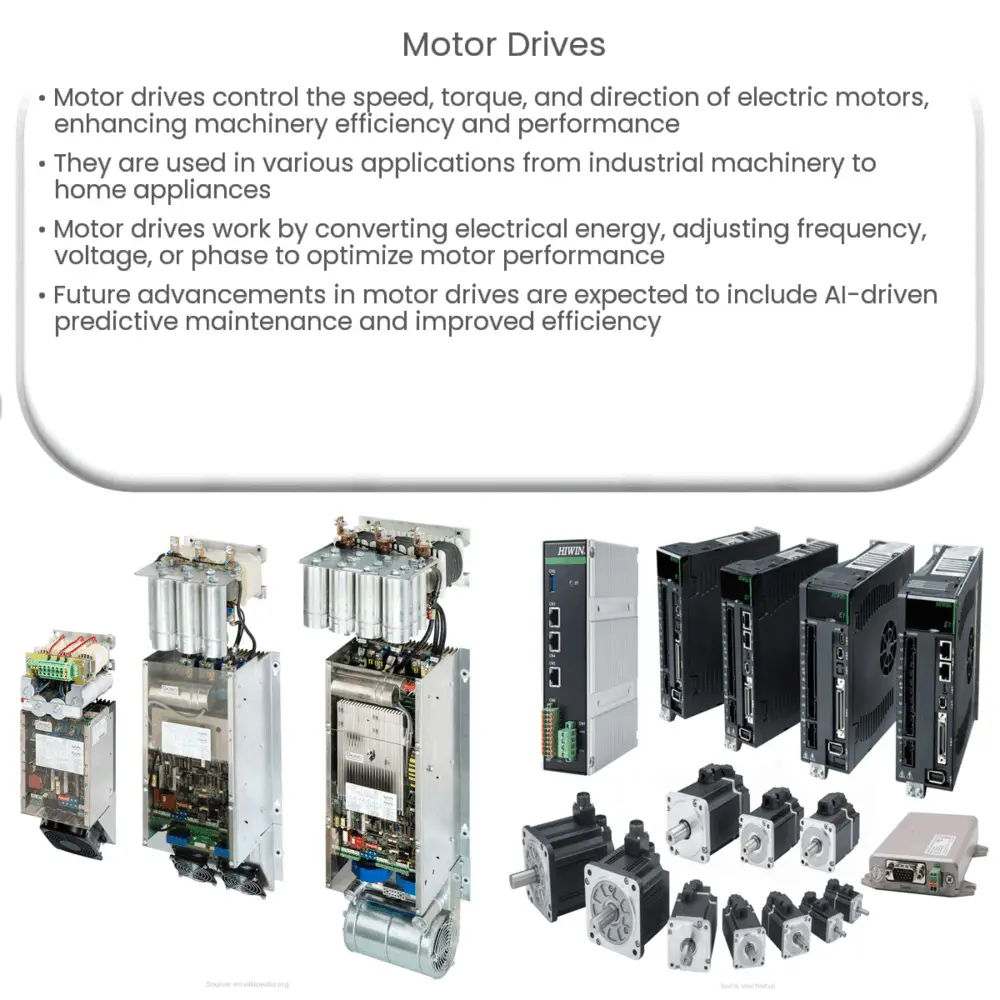Explore the fundamentals of motor drives, their types, working principles, applications, benefits, and future trends in our comprehensive guide.

Understanding Motor Drives
Motor drives are integral components of many industrial, commercial, and residential applications. These devices control the operation of an electric motor by altering its speed and torque. But what exactly are motor drives, and how do they function? Let’s dive deeper.
The Basics of Motor Drives
At their core, motor drives (also known as drive systems or simply drives) are devices that control the speed, torque, and direction of an electric motor. These are used in a myriad of applications – from industrial machinery to domestic appliances, such as air conditioners and washing machines.
Motor drives regulate the electrical energy that motors need to operate, modifying the input power to control the speed and rotation of the motor. This allows for precise control of the machinery or system to which the motor is connected, enhancing efficiency and performance.
Types of Motor Drives
- AC Drives: Also known as variable frequency drives (VFDs), AC drives are the most common type. They control the speed of an AC induction motor by adjusting the motor’s input frequency and voltage.
- DC Drives: DC drives control the speed of DC motors, which are usually used in applications requiring high start-up torque. The speed is controlled by varying the input voltage or through pulse width modulation (PWM).
- Servo Drives: Servo drives control the operation of servo motors, which are high-performance devices often used in applications needing precision control, such as robotics and CNC machinery.
The Working Principle of Motor Drives
Regardless of the type, motor drives work on a fundamental principle: they convert the electrical energy from the power line (either AC or DC) into a form that can be used by the motors (again, either AC or DC). They do this by altering the frequency, voltage, or phase of the power supply.
For instance, in an AC drive, the incoming AC voltage is first rectified into DC. This DC is then converted back into AC, but with the ability to vary the frequency. This change in frequency, in turn, controls the speed and torque of the AC motor.
The sophisticated electronics within the motor drives allow for precise control and feedback, enabling the optimization of motor performance, while also protecting the motor from potential damage caused by overloading or overheating.
Applications of Motor Drives
Motor drives have a wide range of applications due to their ability to precisely control motor speed and torque.
- Industrial Applications: From conveyor belts to centrifuges, motor drives are utilized in various industrial settings for their efficiency and precision.
- Home Appliances: Air conditioners, washing machines, and refrigerators often incorporate motor drives to ensure optimal performance and energy efficiency.
- Automotive Industry: Electric vehicles use motor drives to control the speed and torque of the electric motor, providing smooth and efficient operation.
- Renewable Energy: In wind turbines and solar tracking systems, motor drives play a crucial role in maximizing efficiency.
Benefits of Motor Drives
Motor drives offer significant benefits that enhance the performance of electric motors and the systems they drive.
- Improved Efficiency: By precisely controlling the speed and torque of the motor, motor drives can significantly reduce energy consumption.
- Extended Motor Life: By protecting the motor from potential damage caused by issues like overloading or overheating, motor drives can prolong the lifespan of the motor.
- Better Control: Motor drives allow for precise control of the motor, enabling improved performance and reliability of the system or equipment in which they’re used.
Future Trends in Motor Drives
Looking towards the future, advancements in technology are expected to drive improvements in motor drives. These include the development of more efficient and compact drives, enhanced communication capabilities for better integration with industrial control systems, and improved performance in harsh environments. AI and machine learning are also expected to play a role in the evolution of motor drives, enabling predictive maintenance and further improving efficiency.
Conclusion
In conclusion, motor drives are a vital component in a variety of applications, owing to their ability to efficiently control the operation of electric motors. By offering improved efficiency, better control, and extended motor life, they significantly enhance the performance and reliability of numerous systems. As technological advancements continue, we can expect even greater improvements in motor drive capabilities, making them even more integral to our everyday lives.

